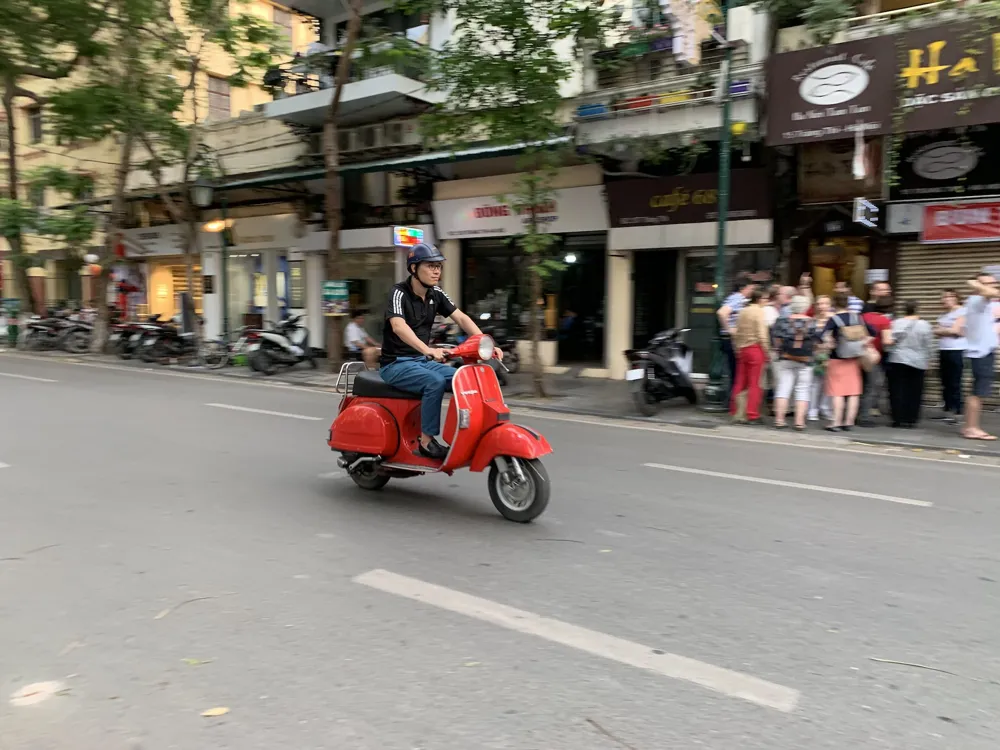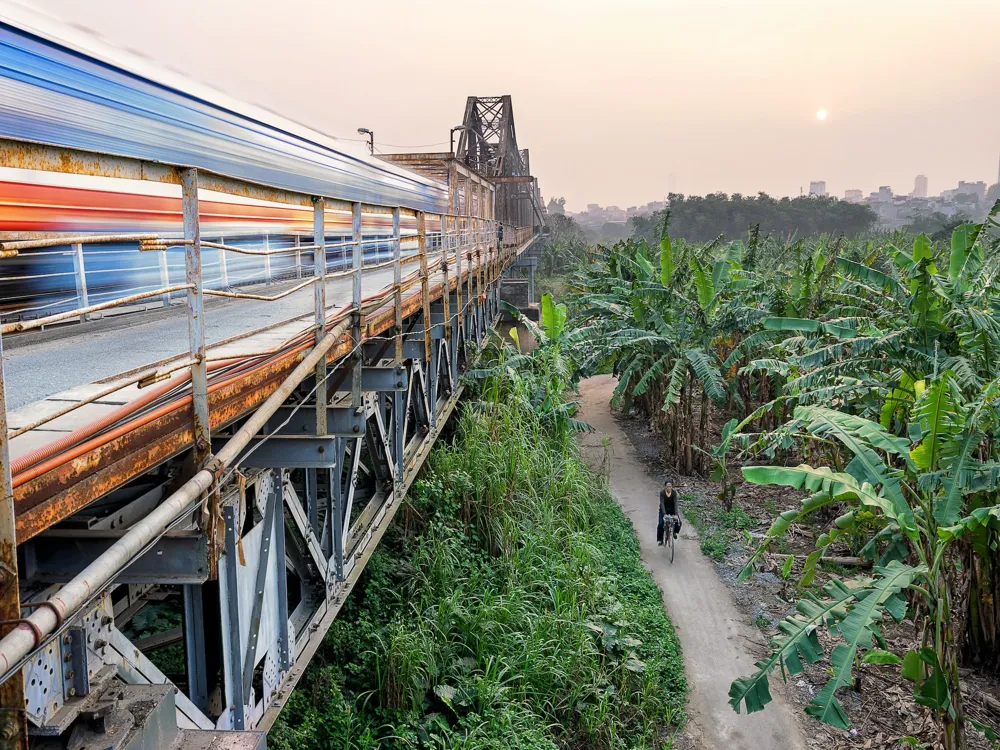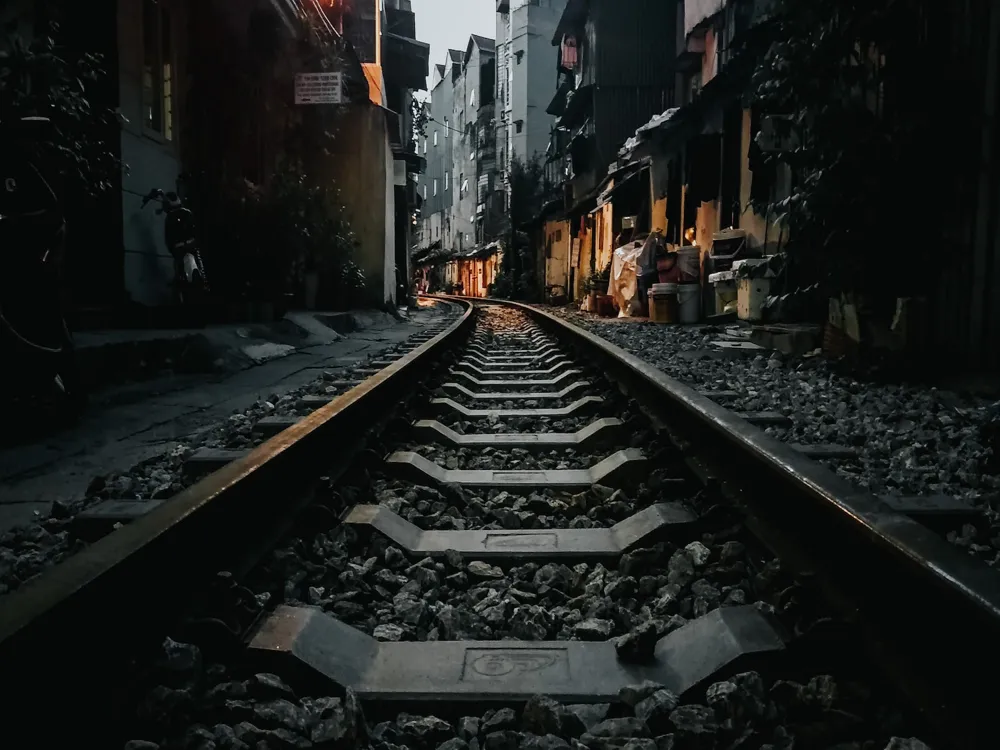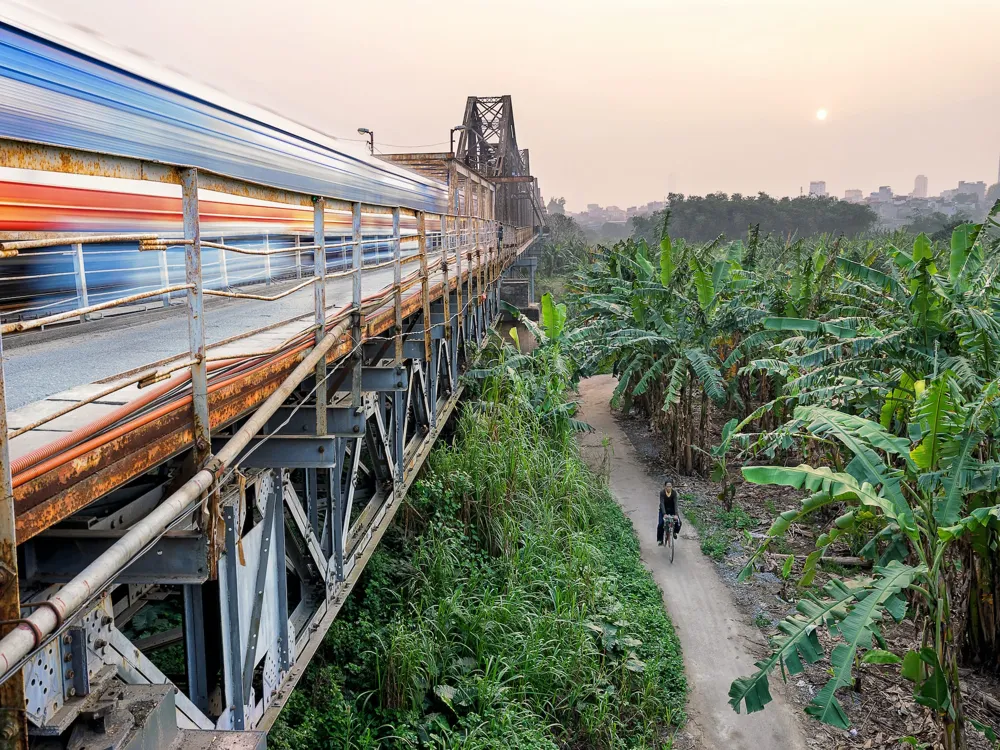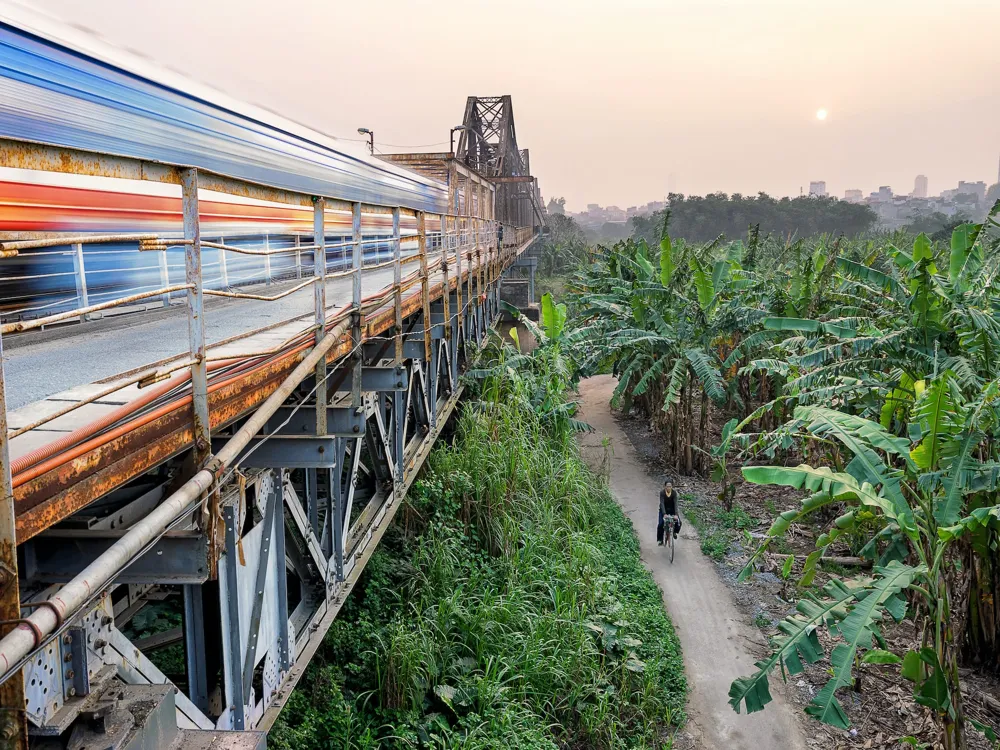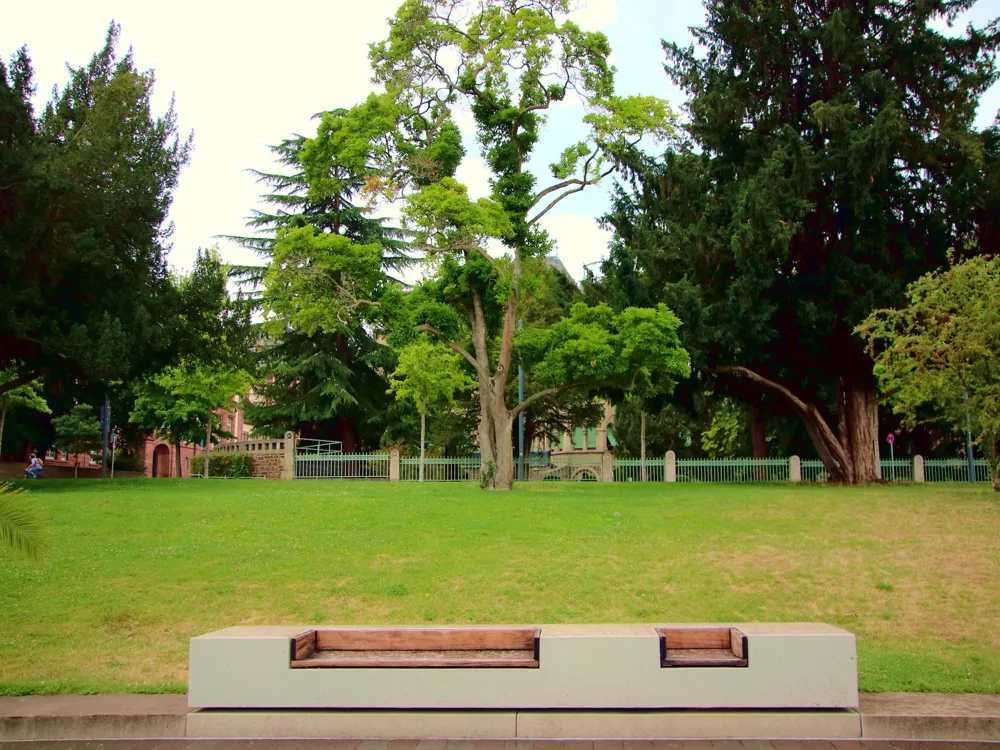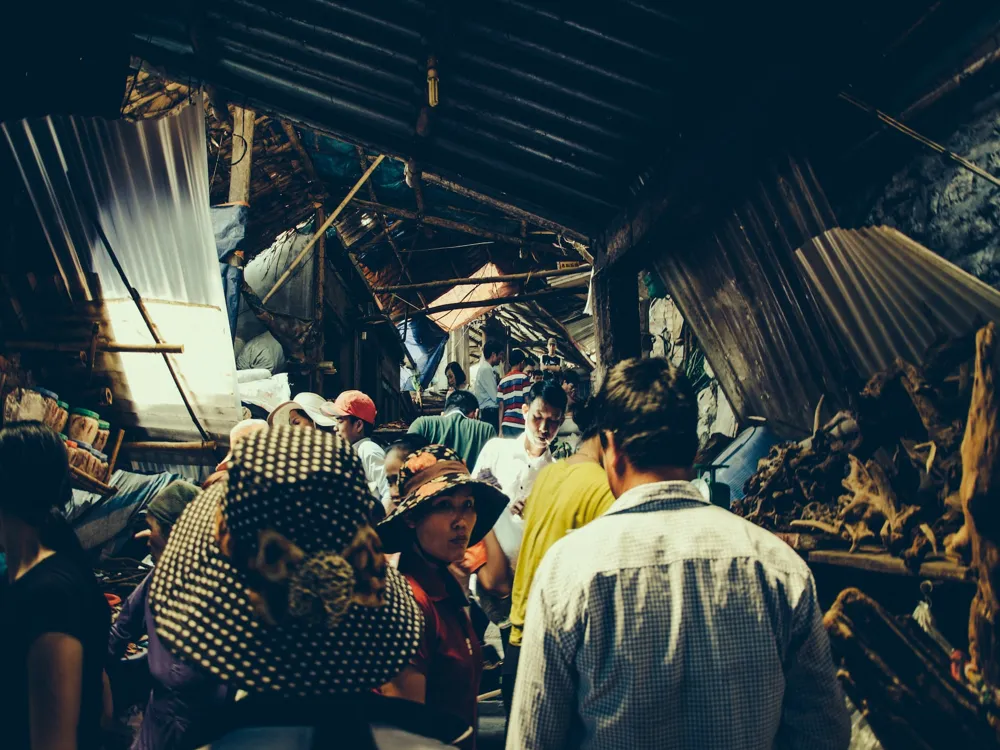Hanoi, the vibrant capital city of Vietnam, is a fascinating blend of East and West, combining traditional Sino-Vietnamese motifs with French flair. It's not only the political capital of Vietnam but also a cultural and historical center. The city is known for its centuries-old architecture and a rich history, with Southeast Asian, Chinese, and French influences. Visitors to Hanoi are greeted by the scents of its bustling street markets, the sounds of scooters whizzing through its streets, and the sight of ancient temples and pagodas nestled amidst modern developments. At the heart of Hanoi is its Old Quarter, an open-air museum of historic Asian and French colonial architecture that has largely remained intact despite the bombings during the Vietnam War. Here, the narrow streets are lined with shophouses, displaying a blend of Vietnamese and French styles, and are bustling with a myriad of vendors, cafés, and art galleries. Hanoi’s architecture is a testament to its rich history, reflecting the different rulers and eras it has lived through. The city's history dates back over a thousand years, with several dynasties leaving their mark on the city. Notable historical sites include the Imperial Citadel of Thang Long, an intriguing relic of Vietnam’s history which is now a UNESCO World Heritage Site, and the well-preserved Temple of Literature, dedicated to Confucius and the site of the nation's first university. The mix of historic sites, colonial architecture, and modern developments make Hanoi a unique and captivating destination. French colonial architecture in Hanoi is one of the city's most distinct features, a legacy of French rule from the late 19th to the mid-20th century. This style is characterized by grand facades, colorful shutters, and intricate ironwork, with famous examples including the Hanoi Opera House and St. Joseph’s Cathedral. The French also left a lasting imprint in the form of wide boulevards and European-style cafes that offer a unique blend of Vietnamese and French cultures. In recent years, Hanoi has experienced rapid development, with modern skyscrapers emerging alongside historic buildings. This juxtaposition of old and new is a physical representation of Hanoi's evolution, yet the city retains its traditional charm. The respect for history and tradition is evident in the preservation efforts of historic buildings and in the daily lives of Hanoians, who still practice age-old customs and festivals. Hanoi's commitment to preserving its heritage is evident in the restoration of the Old Quarter and the conservation of its numerous ancient pagodas and temples. These efforts ensure that the city's history and culture are not only remembered but also lived and breathed as part of daily life in Hanoi. Hanoi's architecture is a vivid tapestry reflecting its historical layers, ranging from ancient temples to French colonial buildings and modern skyscrapers. This architectural diversity tells the story of a city that has been the epicenter of Vietnamese culture and politics for over a thousand years. The city's traditional architecture is showcased in its well-preserved ancient sites, such as the Temple of Literature and the One Pillar Pagoda. These structures reflect the influence of Chinese architectural styles, characterized by intricate wooden work, curved rooflines, and detailed carvings, symbolizing the deep-rooted connection between Vietnam and its northern neighbor. French colonial architecture in Hanoi presents an interesting fusion of European and Asian styles. Buildings from this era, such as the Hanoi Opera House and the Presidential Palace, are marked by their grandeur and elegance, featuring elements like balconies, tiled roofs, and yellow-painted facades. These buildings are not only aesthetically pleasing but also represent a complex period in Vietnam's history. Contemporary architecture in Hanoi is a reflection of its rapid modernization. The skyline is increasingly dotted with modern skyscrapers and mixed-use developments. These new structures, while modern in design, often incorporate traditional Vietnamese elements, showing a city that is growing while remaining respectful of its past. Despite its rapid modernization, Hanoi has taken significant steps to preserve its architectural heritage. The city's conservation plans include strict regulations on the development of new buildings in historic areas and the restoration of old structures. This careful balance between development and preservation is a testament to Hanoi's respect for its history and cultural identity. The ideal time to visit Hanoi is during the spring (March to April) and autumn (October to November) months, when the weather is pleasant with milder temperatures and less rainfall. Understanding local customs is key. For example, dress conservatively when visiting temples and always ask permission before taking photographs of people. Hanoi's traffic can be overwhelming, so it's best to use public transport or ride-sharing apps. For a more authentic experience, consider renting a bicycle or taking a cyclo tour. Hanoi is famous for its street food. Don't miss trying Pho, Bun Cha, and local coffee. Remember to eat at busy stalls for the freshest and most authentic flavors. While Hanoi is generally safe, it's important to be aware of your surroundings and protect your belongings. Also, drink bottled water to avoid health issues. Hanoi is well-connected and accessible from various parts of the world. The primary gateway to the city is the Noi Bai International Airport, located about 30 kilometers from the city center. There are numerous international and domestic flights operating daily. Additionally, Hanoi can be reached by train from other parts of Vietnam, and by bus from neighboring countries like Laos and China. For those within the region, there are also options for road travel. Within the city, public transportation is efficient with buses, taxis, and a newly developed metro system providing easy access to various parts of the city.Overview of Hanoi
French Colonial Influence
Modern Developments and Traditional Values
Preservation of Heritage
Architecture of Hanoi
Impact of French Colonialism
Contemporary Architectural Developments
Preserving the Past in the Modern Era
Tips When Visiting Hanoi
Best Time to Visit
Local Etiquette and Customs
Getting Around the City
Food and Cuisine
Safety and Health Precautions
How To Reach Hanoi
Dong Xuan Market
Hanoi
₹ 15,260 onwards
View hanoi Packages
Weather :
Tags : Shopping
Timings : 7:00 AM - 6:00 PM
Entry Fee : No entry fee
Planning a Trip? Ask Your Question
Also Refered As:
Cho Dong Xuan
Hanoi Travel Packages
View All Packages For Hanoi
Top Hotel Collections for Hanoi

Private Pool

Luxury Hotels

5-Star Hotels

Pet Friendly
Top Hotels Near Hanoi
Other Top Ranking Places In Hanoi
View All Places To Visit In hanoi
View hanoi Packages
Weather :
Tags : Shopping
Timings : 7:00 AM - 6:00 PM
Entry Fee : No entry fee
Planning a Trip? Ask Your Question
Also Refered As:
Cho Dong Xuan
Hanoi Travel Packages
View All Packages For Hanoi
Top Hotel Collections for Hanoi

Private Pool

Luxury Hotels

5-Star Hotels

Pet Friendly







